10 Shrubs for Summer Colour
Shrubs for Summer Colour. Shrubs are useful for providing a framework and structure in the garden. But more than this, they produce beautiful flower displays year after year, making them excellent value for money and worth the space they occupy in your garden. Shrubs range in size from ground-hugging to towering, and plants that look more like multi-stemmed trees. Some are deciduous, others evergreen or semi-evergreen. Whatever the season, site or location, there is likely to be a shrub that will thrive.
I’ve chosen a selection of shrubs that have caught my eye for their colour, fragrance, or form, and that are on my wish list to add to our long shrubbery.
Deutzia x hybrida ‘Strawberry Fields’
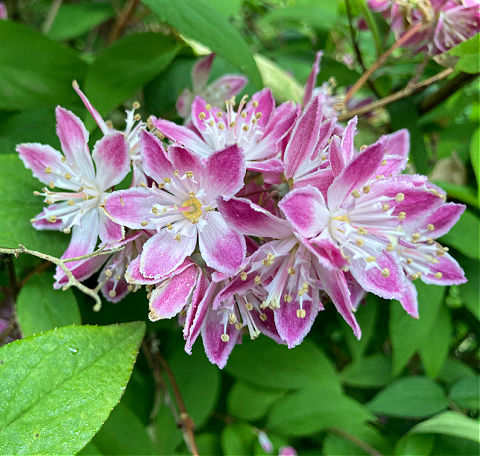
A deciduous, bushy shrub that grows to 200cm height and spread. Grow in full sun or partial shade. It is unfussy about soil or situation. The flower buds are dark pinky red and open to pink flowers with a white centre, each flower being around 2.5cm across. It flowers over a period of weeks in early summer. I’ve seen it flowering in mid-July in a sheltered garden in north Devon. Propagation is relatively easy from softwood cuttings.
Hibiscus syriacus ‘Oiseau Blue’
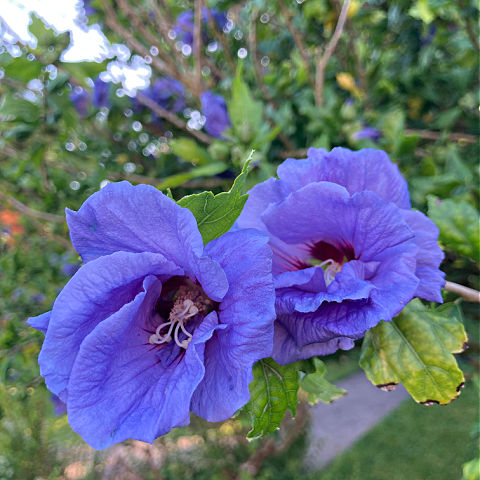
If you have acid soil, then this is not the shrub for you, but for gardens with neutral or alkaline soil, it could be perfect. Hibiscus can grow to be covered with large, trumpet-shaped flowers that have violet-blue petals with a maroon centre. It is not the fastest growing of shrubs, but can reach 150-250cm height and spread in 10-20 years.
The plant in a friend’s garden, planted around 30 years ago, now looks like a small tree and gives a beautiful display most years.
Itea ilicifolia
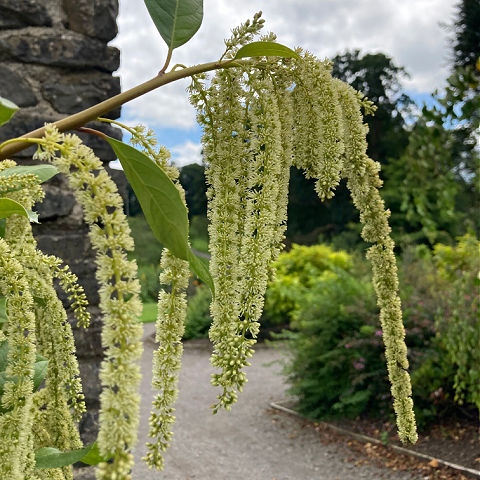
Every time I see this plant, I make a mental note to get one for the garden and then get distracted by something more colourful. And that’s a shame, because the structure and physical interest offered by Itea ilicifolia is outstanding. The flower tassels dangle from the stems making the plant look like it’s covered in creamy-green tinsel. Grow in any moist, but well-drained soil, in full sun or partial on any aspect except south-facing. It prefers a position sheltered from winds, and is hardy across the UK.
Rosa ‘Emma Bridgewater’
No list of shrubs for summer colour would be complete without a rose, it’s been voted the nation’s favourite flower, and rightly so! There are so many varieties to choose from, but my preference is to grow repeat flowering varieties.
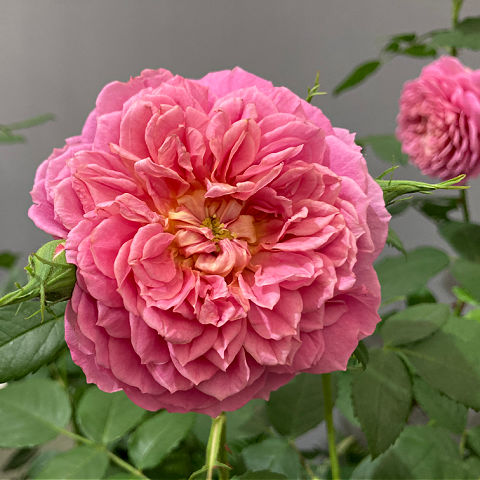
I first saw this rose in bloom at Chelsea Flower Show in 2024, and again in The Glasshouse Garden by Jo Thompson at RHS Chelsea 2025. It’s a repeat flowering rose. If you deadhead regularly, it will continue to provide colour and a light fragrance throughout the summer months and well into the autumn. Height and spread 125cm. Grow in full sun or partial shade, it is unfussy about soil type or situation.
Jasminum humile ‘Revolutum’
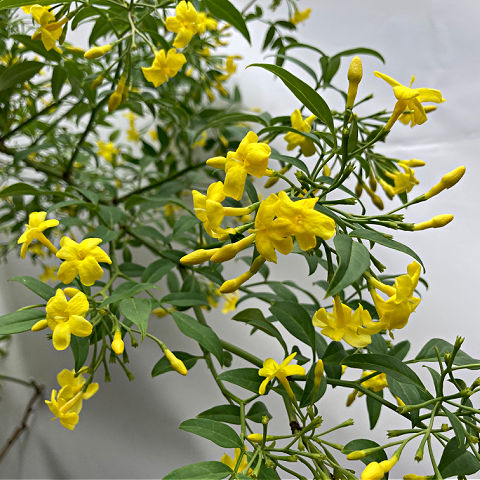
For a mass of bright yellow, fragrant flowers in late spring and early summer, try this evergreen, or semi-evergreen shrub. Like most jasmines, this is not a neat and tidy shrub, but it provides plenty of interest. Grow in full sun or partial shade in a sheltered spot. It is unlikely to tolerate clay soil, but otherwise is unfussy about soil or situation. Height and spread 250cm. Hardy across UK and Ireland in most winters. I saw this plant at Gardeners’ World Live last month and was drawn by the intensity of the yellow flowers.
Calycanthus ‘Aphrodite’
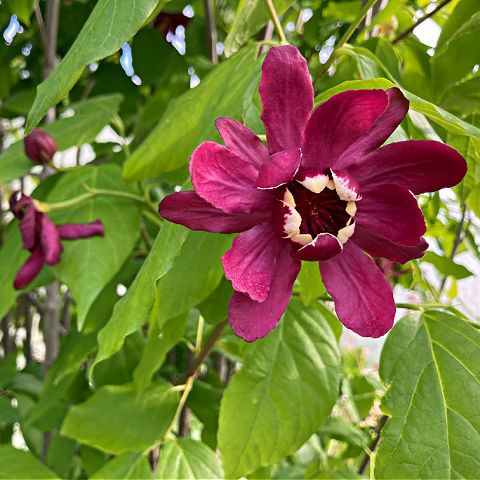
A deciduous shrub that grows to 300cm height. From late spring into summer, it produces large fragrant flowers in rich red tones. It requires moist, but not water-logged soil, a sheltered spot, to protect it against drying winds, and avoid growing in a north-facing position. Calycanthus is unfussy about soil type and grows in full sun or partial shade. It is hardy throughout most of the UK and Ireland, even in severe winters.
Buddleia
Buddleia has the reputation of becoming a large and unruly shrub, and this can happen if they are left to grow without pruning. However, they can be greatly improved by very hard pruning each spring. They are known for attracting bees, pollinating insects and in particular, butterflies to the garden, hence their common name of the Butterfly Bush. Regular deadheading encourages continued flower production. Buddleia davidii self-seeds freely and can become a nuisance and invasive.
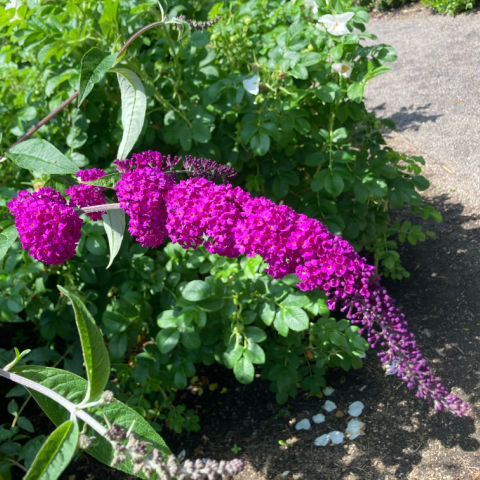
In recent years, smaller-growing varieties have been bred that are seedless or sterile, and can be grown in pots on a patio or in the front to middle of a border. Try one of the Butterfly Candy Little series, which range in colour from white, through pinks to mauve and purple. They produce flowers on a short plant, which reaches 50-80cm height and spread.
Ceanothus
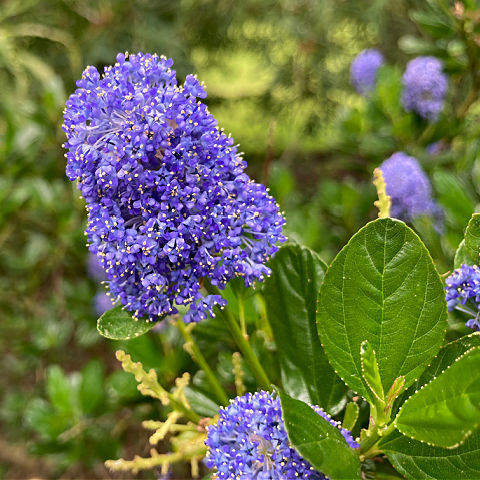
Depending on the variety, Ceanothus shrubs flower from spring to summer or late summer to autumn. They can be evergreen or deciduous. Whichever variety you choose, they provide a good display of blue to violet flowers in tightly packed flower heads, that continue to produce flowers over several weeks. Plant in soil that does not become waterlogged, preferably in a sheltered position. Propagate by cuttings – softwood cuttings for deciduous varieties and semi-ripe cuttings for evergreen varieties.
Hydrangea macrophylla First Editions® ‘Eclipse’
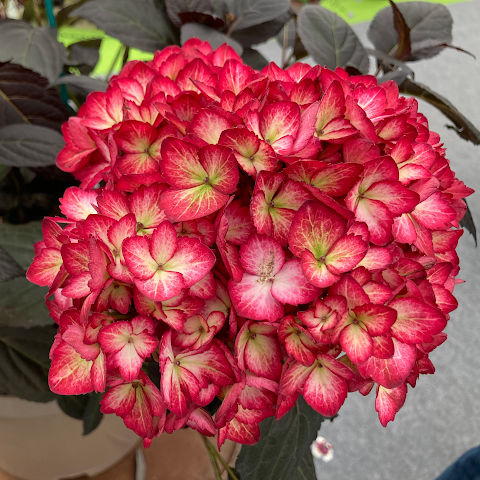
This delightful hydrangea won the Peter Seabrook Award for Best New Plant at BBC Gardeners’ World Live in 2024. It has deep cherry colour flowers with a cream and lime green centre, and dark, almost black, leaves that contrast well with the flower heads. Flowering period is mid-May to September. Grow in full sun or partial shade, in rich, moist, and fertile soil. Shelter from cold, drying winds. Height and spread, up to 150cm.
Lavandula × intermedia Platinum Blonde (‘Momparler’PBR)
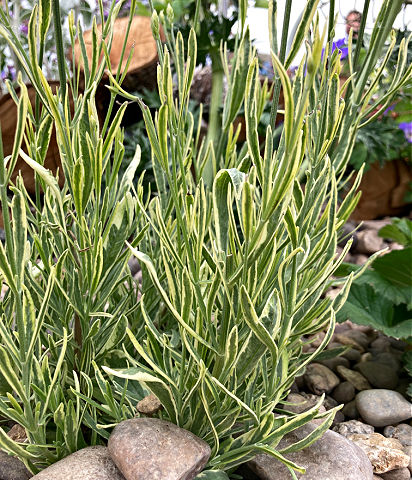
For a lower growing shrub, this lavender has a lot to offer. The striking variegated leaves provide colour in addition to the flowers and the whole plant is scented. Height and spread 40-60cms. As with all lavender, cut back after flowering, but do not cut into the old wood. It thrives in full sun in well-drained soil, avoid growing on clay soil where it may fail to survive. Position in a sheltered spot on any site except north-facing. That said, we grow lavenders successfully on our north-facing, windy, clay soil, but we plant it on small mounds to ensure it does not become waterlogged. They may not be as big as they would in ideal conditions, but at least we get to enjoy them in the garden.
Moving thoughts
If you plant one of these shrubs for summer colour and later decide it is in the wrong place for your garden, don’t be afraid to move it. During the dormant period, which is winter for most shrubs, dig it up with as large a rootball as you can mange and move to its new position. Replant at the same depth as it was growing previously. If the plant is top heavy, provide support for the first year. Water well for the first spring and summer, while new roots are growing.
Further information
The article about Shrubs for summer colour was written for Amateur Gardening magazine in summer 2025. I may have updated some of the specific varieties and images and included more suggestions and varieties. Additionally, links are included to help you find the suggested plants.
- 10 Shrubs for Summer Colour - October 10, 2025
- Contrasting flower colours - September 26, 2025
- Baby pepper inside pepper | Strange vegetable - September 16, 2025
